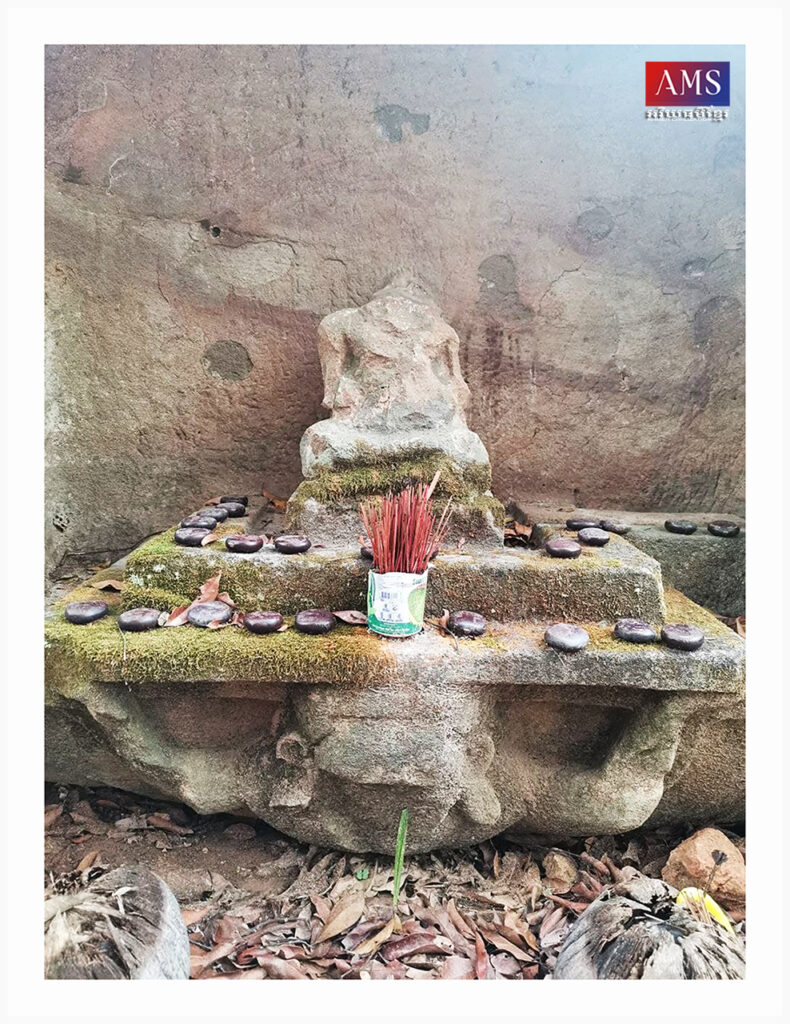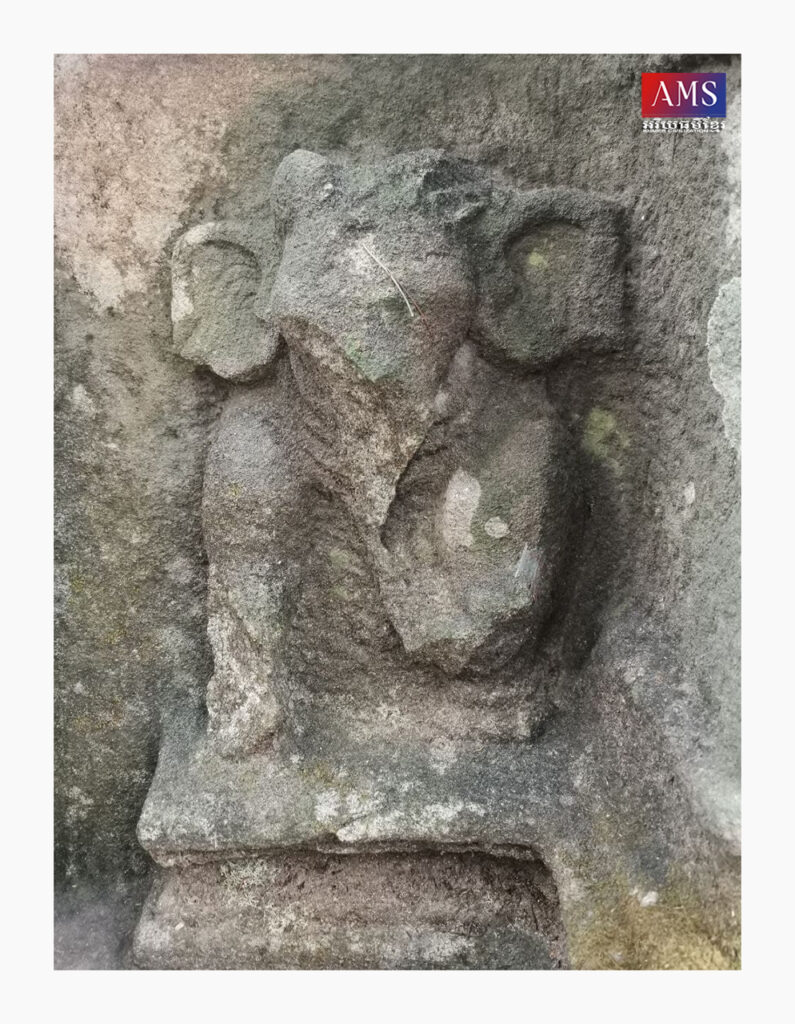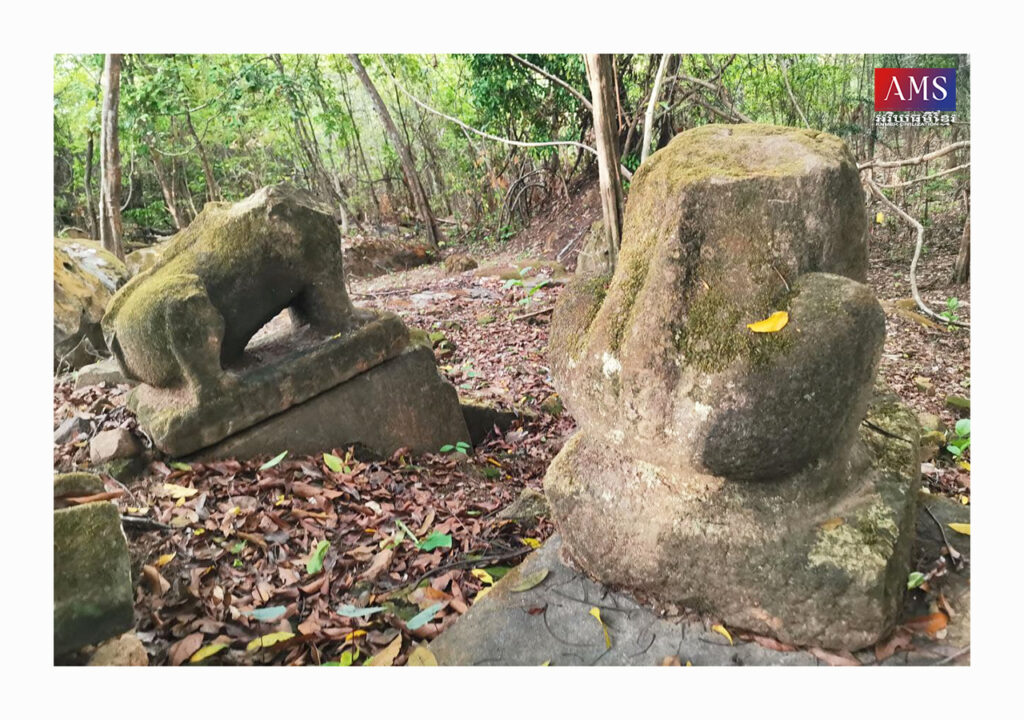
រូបគ្រុឌទ្រទម្រព្រះគណេស
តាមរយៈការស្រាវជ្រាវកន្លងមកបង្ហាញថា នៅទឹកដីខេត្តព្រះវិហារសព្វថ្ងៃ មាននៅសល់តឹកតាងប្រាសាទសម័យមុនអង្គរតិចតួចខ្លាំងណាស់ ហើយក្នុងនោះប្រាសាទដែលគេស្គាល់ច្រើនជាងគេគឺ ប្រាសាទត្រពាំងគុក ដែលជាស្ថាបត្យកម្មមានសំណង់គភ៌គ្រឹះដូចប្រាសាទអាស្រមមហាឥសី និងភ្នំដាជាដើម។ ក្រៅពីប្រាសាទនេះ មានប្រាសាទមួយទៀតដែលអ្នកស្រាវជ្រាវ មកពីអឺរ៉ុបកត់សម្គាល់ និងធ្លាប់សិក្សាច្រើនមកហើយ ពោល គឺប្រាសាទព្រៃគុក។ ប្រាសាទនេះ ស្ថិតនៅក្នុងភូមិប្រើសក្អក ឃុំម្លូព្រៃ ស្រុកឆែប ខេត្តព្រះវិហារ ដែលជាតំបន់សម្បូណ៌ដោយជនជាតិកួយរស់នៅសព្វថ្ងៃ។
នៅក្នុងឆ្នាំ១៨៧៩ លោកបណ្ឌិត Harmand, J. បានចេញផ្សាយសៀវភៅមួយមានចំណងថា “Notes de voyage en Indo-Chine, Les Kouys, Ponthey Kakeh. Considération sur les monuments dits Khmer” ដែលជាឯកសារគោលមួយដែលបានរៀបរាប់អំពីប្រាសាទព្រៃគុកនេះមុនគេ។ ក្រោយមក មកដល់ស.វ.ទី២០ អ្នកស្រាវជ្រាវល្បីឈ្មោះចំនួន ៤ នាក់ បានសិក្សាអំពីប្រាសាទនេះជាបន្តបន្ទាប់ ពោល គឺលោក Étienne Aymonier, Lunet De Lajonquière, Henri Parmentier និង George Coedès។
ប្រាសាទព្រៃគុក មានលក្ខណៈពិសេសមួយបែបខុសពីប្រាសាទផ្សេងៗនៅស្រុកខ្មែរពោលគឺកាលពីស.វ.ទី៧-៨ គេបានឆ្លាក់ថ្មធម្មជាតិដែលមានស្ថិតនៅទីតាំងដើមស្រាប់ឱ្យចេញជាក្បាច់មានខឿន ជាសារពើសូត្រ មានហោជាងដូចជើងក និងមានស្លាបសងខាង។ នៅចំកណ្តាលសិល្បករឆ្លាក់រូបព្រះគណេសអង្គុយ ក្នុងកាយវិការពែនភ្នែកនៅលើជើងទម្រមួយ ដែលនៅខាងក្រោមទម្រគេឆ្លាក់ជារូបគ្រុឌលើកដៃត្រដាងស្លាបទ្រជើងទម្រ។ កាយវិការរបស់គ្រុឌរបៀបនេះ មានលក្ខណៈដូចនឹងគ្រុឌដែលគេឆ្លាក់ទ្រពីក្រោមវិមានអណ្តែតដែលមាននៅតំបន់ប្រាសាទសំបូរព្រៃគុក។ ដោយឡែក នៅអមសងខាងព្រះគណេស គេបានឆ្លាក់រូបដំរីម្ខាងមួយៗ។

ចម្លាក់ដំរីនៅអមព្រះគណេស
ទម្រង់ព្រះគណេសដែលឆ្លាក់ជាប់ថ្មធម្មជាតិរបៀបនេះ យើងកម្រឃើញមានក្នុងសិល្បៈខ្មែរនាស.វ.ទី៧-៨ ណាស់ តែយើងធ្លាប់ឃើញគេឆ្លាក់នៅលើជញ្ជាំងថ្ម នៅតំបន់ភ្នំគូលែន ដូចឃើញមាននៅពើងត្បាល់ និងពើងគំនូរ ដែលគេឆ្លាក់ក្នុងកាយវិការឈរជិតព្រះឥសូរជាបិតារបស់ព្រះគណេស។ជាទូទៅក្នុងសាសនាព្រាហ្មណ៍គេចាត់ទុកព្រះគណេស ជាទេពនៃបញ្ញា ចំណេះដឹង និងកំចាត់ឧបសគ្គ ឬអាចដាក់ជាឧបសគ្គ ដែលទម្រង់ជាទូទៅរបស់ទ្រង់ គឺមានពោះកំប៉ោងក្បាលជាសត្វដំរី និងមានយានជំនិះជាសត្វកណ្តុរ ឬពេលខ្លះជិះលើសត្វដំរីក៏មាន។
ក្រៅពីនេះ នៅខាងលើដំរីទាំងសងខាង យើងឃើញមានសិលារឹកចារជាភាសាសំស្រ្កឹត។ នៅផ្នែកខាងស្តាំ មានចំនួន ២បន្ទាត់ និងនៅផ្នែកខាងឆ្វេងមានចំនួន ៤បន្ទាត់ដូចគ្នា។ សិលាចារឹកនេះ ចុះបញ្ជីលេខ K.358 ដែលធ្លាប់សិក្សាដោយលោក George Coedès ផ្សាយនៅក្នុងសៀវភៅ Inscription du Cambodge វគ្គទី៥ ដែលលោកគិតថាទំនងជាចារឹកនៅរវាងស.វ.ទី៧។ ចំណែក សេចក្តីជាទូទៅនៃសិលាចារឹកនេះ រៀបរាប់ទាក់ទងនឹងការគោរពព្រះគណេស និងរឿងទេវកថាមួយចំនួនដែលទាក់ទងនឹងព្រះគណេស។ ក្រោយមក នៅរវាងស.វ.ទី១០ ដែលអាចស្ថិតនៅរជ្ជកាលព្រះបាទរាជេន្រ្ទវរ្ម័ន គេបានសង់សំណង់ឥដ្ឋគ្របពីលើសំណង់ចាស់ ហើយនៅផ្នែកខាងកើតគេរៀបជាស៊ុមទ្វារ ជណ្តើរ ធ្វើអំពីថ្មភក់ ព្រមទាំងតម្កល់រូបបដិមាតោពីរឈរអមសងខាងទ្វារចូលទៀតផង។ ប្រពៃណីបែបសាងបន្ថែមបែបនេះ យើងតែងឃើញជារឿយៗនៅស.វ.ទី១០ ក្នុងរជ្ជកាលព្រះបាទរាជេន្រ្ទវរ្ម័ន ជាក់ស្តែងដូចនៅក្រុមខាងជើង នៃតំបន់ប្រាសាទសំបូរព្រៃគុក ដែលមានសំណង់ជាច្រើនបានសាងសង់បន្ថែមនៅក្នុងរជ្ជកាលរបស់ទ្រង់។ ជារួមមក ប្រាសាទព្រៃគុក អាចចាត់ទុកបានថាជាសិល្បៈសម័យមុនអង្គរមួយដ៏សំខាន់ដែលមានវត្តមាននៅលើទឹកដីខេត្តព្រះវិហារសព្វថ្ងៃ និងជាទីស្ថានសក្ការបូជាព្រះគណេសមួយនៅក្នុងស្ថាបត្យកម្មខ្មែរ។

បដិមាតោនៅប្រាសាទព្រៃគុក
——————————————————————————
Prey Kuk temple
According to the previous researching shows that in the territory of Preah Vihear today, there are very few remains of pre-Angkorian temples, and the most well-known temple is Trapeang Kuk, which its architecture has Garbhagriha similarly Asrom Maha Eysei temple, Phnom Da temple. Besides, there is another temple that researchers from Europe have noticed and studied a lot on Prei Kuk temple. This temple is located in Preus kaak village, Mlou Prei commune, Cheb district, Preah Vihear province, which is today abundance of Kuy ethnic group living.
In 1879 Dr. Harmand, J. published a book entitled “Notes de voyage en Indo-Chine, Les Kouys, Ponthey Kakeh. Considération sur les monuments dits Khmer ”which is one of the first documents to describe this Prei Kuk temple. Later, in the 20th century, four famous researchers studied this temple in successions such as Étienne Aymonier, Lunet De Lajonquière, Henri Parmentier and George Coedès. Prei Kuk temple has a special feature that is different from other temples in Cambodia, that is, the temple was built by carving natural stone which was in its original location including the basement and pediment and both sides contained protruding structures. Ganesha statue sits on a pedestal and Garuda bas-relief with his wings arms outstretched to support the pedestal. This kind of Guru gesture is similar to the Garuda carved under the floating temple in the Sambor Prei Kuk temple complex. In addition, on either side of the Ganesha statue, an elephant was carved on each side.
The form of Ganesha carved in natural stone like this is very rare in Khmer art in the 7th-8th centuries, but we used to see them carved on the stone wall in Phnom Kulen as seen in the Pounge Tbal and Pounge Komnou, which is carved in the gesture of standing close to Shiva god, the father of Ganesha. In Brahmanism, Ganesha is considered a deity of intellect, knowledge, and overcoming obstacles, or can be placed as an obstacle, the most common form of which is having a big belly, his head is an elephant, and rat is his vehicle, or sometimes riding an elephant.
In addition, above the elephants on both sides, we see inscriptions in Sanskrit. On the right side, there are 2 lines and on the left side, there are 4 identical lines. This inscription numbered K.358 that was studied by George Coedès published in the fifth volume of Inscription du Cambodge, which he thought was probably inscribed between the 7th century. The general content of this inscription describes the worship of Ganesha and some myths related to Ganesha. Later, in the reign of King Rajendravarman during the 10th century perhaps, a brick structure was built over the old structure. On the east side, a sandstone staircase and door frame were erected and two lion statues were placed at both sides of the entrance. This type of extension is often seen in the 10th century during the reign of King Rajendravarman, as in the northern part of the Sambor Prei Kuk temple complex, with many additions built during his reign. Overall, Prei Kuk temple can be considered as an important pre-Angkorian art that is present in the territory of Preah Vihear province today and is a place of worship for a Ganesha statue in Khmer architecture.
អត្ថបទដោយ៖លោក ម៉ង់ វាលី






